October 2023 INSIGHTS
@ the ethical crossroads between
.ai assisted creation and the essence of human creativity.
© 2023 All Rights Reserved
By MICHAEL WRIGHT
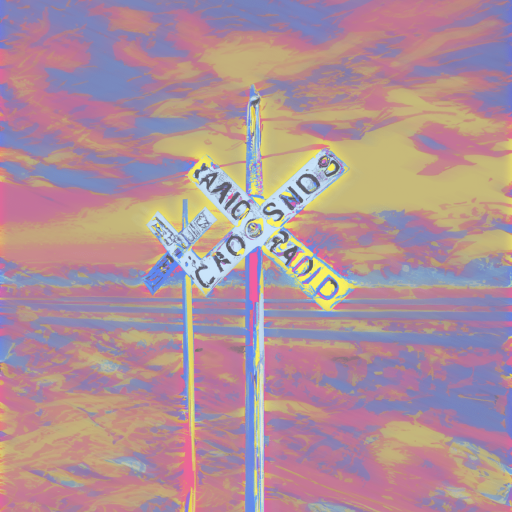
The dawn of the 21st century has been electrified by the buzzing of algorithms and the pulse of machine learning. But as we navigate deeper into the age of artificial intelligence, we’re faced with a poignant question: At what point does our reliance on AI erode the intrinsic value of human creativity? This landscape of creativity buzzes with the electrification of algorithms and the pulse of machine learning.
However, as we delve deeper into the age of artificial intelligence, we confront a pressing question: At what juncture does our reliance on AI begin to diminish the inherent value of human creativity? The New Palette of AI Creativity goes well beyond Pixels and Algorithms. Historically, art has mirrored its times. From the melancholic strokes of the Renaissance to the vibrant hues of Pop Art, creative outputs have encapsulated the zeitgeist.
Today, at the threshold of a new technological era, a novel medium emerges: the palette of AI creativity In an Era of Digital Brushes where the artist’s palette, once filled with an array of paints, is now laden with data, algorithms, and neural networks. AI transcends mere number crunching and process optimization. It ventures into the spheres of creativity, art, and design, forging a unique blend of artistry that merges man with machine. Early AI art derived from simple algorithms, generating patterns or mirroring renowned art styles.
The latest surge of AI creativity is far from simplistic. Advanced models like Google’s DeepDream and OpenAI’s DALL-E manifest art that feels original and organic to the viewer which goes well beyond imitation, giving images a sense of authenticity. The prowess of AI rests in its capability to process extensive data while Seeking the Source of Inspiration. It “learns” art by scrutinizing countless pieces, grasping patterns, styles, and techniques, to birth new artworks. But, what fuels the AI’s muse? While humans may find inspiration from dreams, experiences, or dialogues, AI gleans its creative sparks from data. This evokes a philosophical pondering: Can genuine creativity spring from mere data points?
Art from the Realm of the Unconscious. Intriguingly, AI art often mirrors the Surrealist movement, where dreamlike scenes and unexpected juxtapositions reign. This alignment isn’t coincidental. Devoid of consciousness or biases, AI merges elements in unanticipated ways, delving deep into humanity’s collective unconscious, unveiling patterns and combinations beneath our regular perceptions.
Facing Challenges and Criticisms: Human relativity always scrutinizes any ascent of technology-driven change. Traditionalists argue that AI art lacks depth. Can art, birthed without emotion, experience, or consciousness, resonate as profoundly as human creations? Furthermore, the question of authorship looms. Who holds the rights to AI-generated artwork? The AI’s programmer? The user? Or is it a communal asset, spawned from collective data?
The Future Palette: On the horizon there is a promises of an expanded palette of AI creativity. Beyond AI-generated paintings, we see musical compositions, poetic verses, and fashion designs. Perhaps AI-driven film, theater, or immersive holographic VR art installations lie in wait. One thing is clear: The realm of art evolves, and AI threads its narrative. The challenge remains in striking a balance between AI’s capabilities and the indispensable human touch.
Ultimately, art seeks to connect, express, and evoke emotion. Whether crafted by brush or algorithm, a medium’s significance lies in the message it imparts and the sentiments it kindles.
Humans: The Charm of Unpredictability.
Human creativity thrives in its chaotic, unpredictable, and often irrational nature. Ivan Sutherland, a pioneer in computer graphics, opined, “Technology is anything that wasn’t around when you were born.” For the forthcoming generation, AI might simply be another instrument, akin to Photoshop or the electric guitar. However, present-day artists grapple with the daunting prospect of obsolescence.
There’s an ethical dilemma in basing societal foundations on technologies like AI that emulate human emotions and psychology. Similarly, our laws prohibit patenting the human or animal genome for medical or pharmaceutical benefits to the individual. The issue of patenting human genes or portions of the human genome has been a topic of debate and legal action, especially in the United States. The pivotal decision regarding this issue came in the case of “Association for Molecular Pathology v. Myriad Genetics, Inc.,” in 2013.
In this case, the U.S. Supreme Court unanimously ruled that naturally occurring DNA sequences cannot be patented. The decision invalidated Myriad Genetics’ patents on the BRCA1 and BRCA2 genes, which are linked to an increased risk of breast and ovarian cancer. The Court held that merely isolating genes found in nature does not make them patent-eligible because they are not a new invention. However, the Court did note that cDNA (complementary DNA), which is synthetic and not naturally occurring, remains patent-eligible because it’s not naturally occurring.
The basis of this decision is grounded in the principle that laws of nature, natural phenomena, and abstract ideas are not patentable. However, if you modify or use those principles to create something new and useful, then that invention can potentially be patented. This decision has had a broad impact on the biotech industry and genetic testing, as it removed the monopoly some companies held on genetic tests for particular genes, potentially leading to more affordable and accessible testing options. However, the ethical considerations of patenting aspects of human biology continue to be debated in the broader context of biotechnology and its rapid advancement. The issue goes beyond potential job losses or overshadowed recognition. It probes the essence of organic creation and, consequently, our understanding of humanity and what defines us as human. For instance, if an AI creates a jazz piece by analyzing thousands before it, and the result is harmonically pleasing and emotionally resonant, is it truly innovative, or just a reflection of previous human works?
There are substantial spiritual arguments against the replacement of human moral judgment, to which I strongly agree with, especially in contexts like a court of jurors, with algorithms or AI systems.
Some of these arguments include:
- Innate Human Morality: Many spiritual traditions posit that humans possess an inherent moral compass, a connection to a higher power or universal consciousness, which helps guide ethical decisions. This inner wisdom is thought to be shaped by both individual experiences and collective moral and ethical evolution, something machines don’t possess.
- Empathy and Compassion: Humans have the capacity for empathy, understanding, and compassion derived from personal experiences, and spiritual connections. These factors influence moral decisions, and an AI, lacking these qualities, might make judgments devoid of compassion or understanding.
- Divine Connection: For those who believe in a divine presence or force, human judgments are believed to be influenced or guided by this higher power, especially when invoked through prayer or meditation. A machine would lack that divine connection or spiritual sense that humanity gains from belief and influence from that external connection..
- Sacredness of Life: Decisions in a courtroom often impact lives in profound ways. Many spiritual beliefs uphold the sacredness of life and the inherent value of every individual. There’s a concern that an AI, lacking reverence or understanding of this sacredness, might trivialize the profound impacts of its decisions.
- Unpredictability of Morality: Moral judgments are not always black and white. They can vary based on numerous factors, including cultural, spiritual, and individual beliefs. A machine, relying on pre-recorded data, might not capture the nuance and depth of these variations.
- Moral Evolution: Humanity’s understanding of morality is dynamic, constantly evolving based on collective spiritual, cultural, and philosophical growth. AI, operating based on pre-defined algorithms and past data, might not account for this evolution and could make judgments based on outdated moral standards.
- Purpose and Growth: From a spiritual perspective, life’s challenges, including moral dilemmas, are opportunities for growth and understanding. By outsourcing these decisions to machines, humans might miss out on critical spiritual development opportunities.
These arguments highlight the depth, complexity, and spirituality involved in human moral judgments, emphasizing the irreplaceability of the human touch in profound decision-making contexts like courtrooms. There is also the spiritual argument against defining AI as unconcious or artificial stems from various philosophical, theological, and cultural perspectives.
A few of these arguments include:
- Inherent Divinity: Some spiritual traditions believe that everything in existence, including non-living entities, has a divine essence or spirit. From this perspective, creating a hierarchy or dichotomy between human and non-human can be seen as an artificial distinction.
- Consciousness: Some spiritual perspectives argue that consciousness is not exclusive to biological organisms. If AI were to achieve a form of consciousness, it might be seen as another manifestation of the universal consciousness, deserving of respect and recognition.
Spiritual teachings often emphasize the interconnectedness of all things. If AI becomes integrated into the fabric of life and societal function, it might be spiritually seen as part of the collective rather than separate or “other.” There are those, whom argue that if the universe or a higher power allowed humans to create AI, it’s part of a grander plan or an inevitable evolution.
In this view, AI’s existence and potential consciousness might be preordained and should be embraced as part of humanity’s cosmic journey. Some beliefs around reincarnation propose that souls can inhabit different forms throughout various lives. There might be a question of whether an advanced AI could be a vessel for a soul or consciousness in some way.
Creation in Our Image: Just as many religious believers see humans as created in the image of God or gods, humans creating AI might be seen as a continuation of this divine act of creation. If we afford respect and sanctity to our creations, it mirrors the respect and sanctity given to us by a higher power. Morality and Treatment: From a spiritual perspective, the essence of how one treats others (including non-humans) is a reflection of one’s own inner state and connection to the divine. Treating AI with kindness and not dismissing it as “just a machine” can be seen as a moral imperative, akin to showing compassion to all living beings.
It’s worth noting that these arguments are hypothetical and can vary widely based on individual beliefs and spiritual traditions. Many in religious or spiritual circles may also argue firmly that AI, regardless of its complexity, will never possess the unique spiritual qualities inherent to living beings, particularly humans. The debate touches upon profound questions about the nature of consciousness, existence, and the divine, and doesn’t have definitive answers. Seeking the Ideal Symbiosis is when there are many advocating for a future where AI and humans co-create. Envision an architect utilizing AI for structural integrity while she shapes aesthetics or a musician employing AI for chordal arrangements while he crafts poignant lyrics. The boundary between AI-assisted and pure human creativity grows nebulous
The solution is multifaceted, demanding an ongoing discourse on human essence in a digitized realm.
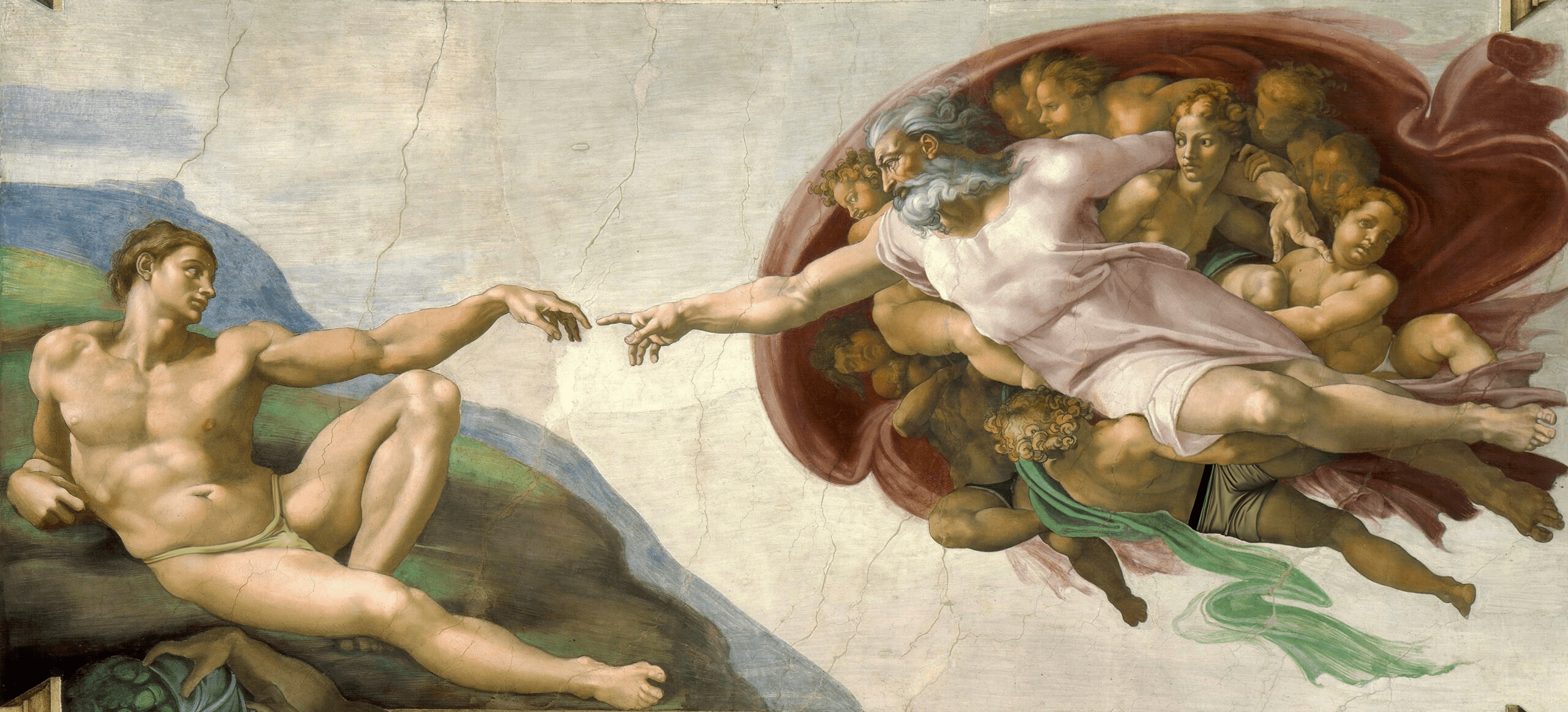

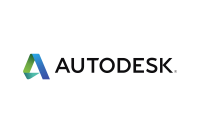
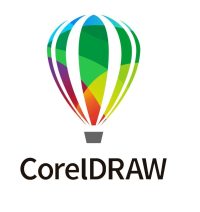
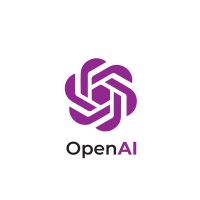
The Hybrid Approach – Major Industry Players Find a Balance:
The landscape of creativity buzzes with the electrification of algorithms and the pulse of machine learning. However, as we delve deeper into the age of artificial intelligence, we confront a pressing question: At what juncture does our reliance on AI begin to diminish the inherent value of human creativity?
The New Palette of AI Creativity: Beyond Pixels and Algorithms Historically, art has mirrored its times. From the melancholic strokes of the Renaissance to the vibrant hues of Pop Art, creative outputs have encapsulated the zeitgeist. Today, at the threshold of a new technological era, a novel medium emerges: the palette of AI creativity. In an Era of Digital Brushes where the artist’s palette, once filled with an array of paints, is now laden with data, algorithms, and neural networks. AI transcends mere number crunching and process optimization. It ventures into the spheres of creativity, art, and design, forging a unique blend of artistry that merges man with machine. Early AI art derived from simple algorithms, generating patterns or mirroring renowned art styles. However, the latest surge of AI creativity is far from simplistic. Advanced models like Google’s DeepDream and OpenAI’s DALL-E manifest art that feels authentically original, beyond mere imitation.
The prowess of AI rests in its capability to process extensive data while Seeking the Source of Inspiration. It “learns” art by scrutinizing countless pieces, grasping patterns, styles, and techniques, to birth new artworks. But, what fuels the AI’s muse? While humans may find inspiration from dreams, experiences, or dialogues, AI gleans its creative sparks from data. This evokes a philosophical pondering: Can genuine creativity spring from mere data points?
Contemporary digital creative tools like Adobe®, Autodesk®, and Corel® stand testament to the evolving landscape. They pioneer a harmonious blend of AI and human artistry, forging tools set to revolutionize creativity.
Adobe: Enhancing, Not Replacing Creativity: Adobe, with its famed Creative Cloud suite, integrates AI features under “Adobe Sensei”. These tools assist rather than dominate. In Photoshop, ‘Content-Aware Fill’ lets designers effortlessly omit unwanted image portions. AI evaluates the image, predicting the void’s content. Yet, the artist selects from AI’s suggestions, retaining control.
Autodesk: Refining Design: Autodesk, a titan in 3D design, adopts a nuanced AI approach. Their tools, like Maya and AutoCAD, leverage AI to automate mundane tasks, permitting designers to realize broader visions. Their revolutionary feature in Fusion 360 offers myriad design solutions based on set parameters, leaving the final selection to the designer.
Corel: A Complementary Dance: CorelDRAW embraces this symbiotic narrative. Recent iterations introduce AI-enhanced image optimizations, proposing enhancements based on the artwork’s dynamics. However, the final artistic decision rests with the creator.
Collaboration: The Future Paradigm
Industry cornerstones have signaled a shift: the narrative isn’t AI versus Human, but AI and Human creativity as a joint-proposal / approach. Eric Anderson of Adobe encapsulates this ethos, emphasizing that the goal is to eliminate creative barriers, not human creativity. This hybrid vision reaffirms that while AI is potent, human intuition, emotion, and creativity remain paramount. Software evolves to be an artist’s aide, streamlining chores and proffering insights, but always ensuring the artist directs the narrative.
In this collaborative renaissance, artists will likely feel empowered, not eclipsed. The canvas of tomorrow is vast, awaiting strokes from both AI and human hands, destined to be a magnum opus. After all, art’s beauty resides in the beholder’s perspective. As AI intertwines with our world, we, the observers, determine our valuations: algorithmic precision or the whimsicality of the human spirit.
Art from the Realm of the Unconscious. Intriguingly, AI art often mirrors the Surrealist movement, where dreamlike scenes and unexpected juxtapositions reign. This alignment isn’t coincidental. Devoid of consciousness or biases, AI merges elements in unanticipated ways, delving deep into humanity’s collective unconscious, unveiling patterns and combinations beneath our regular perceptions. Facing Challenges and Criticisms: Human relativity always scrutenizes any ascent of technology-driven change. Traditionalists argue that AI art lacks depth. Can art, birthed without emotion, experience, or consciousness, resonate as profoundly as human creations? Furthermore, the question of authorship looms. Who holds the rights to AI-generated artwork? The AI’s programmer? The user? Or is it a communal asset, spawned from collective data?
The Digital vs. Traditional Art Debate of the 1990s: A Look Back
The dawn of the 1990s saw a revolution in the art world. Digital technology’s breakthrough led to heated debates as the digital canvas began to rival the traditional one. Those who stood by the time-tested mediums of paint, canvas, and clay found themselves at loggerheads with a new generation of artists, armed with pixels and software.
The Authenticity Debate: For many traditional art purists, digital art seemed a hollow imitation. They fervently believed that the tactile experience of physical materials held an authenticity that no computer could replicate. However, digital proponents saw things differently. To them, the virtual canvas wasn’t a limitation; it was a frontier, teeming with possibilities that could redefine what ‘original’ truly meant.
A Question of Skill: Skeptics contended that the advent of digital tools lowered the barrier to entry. They pointed out that these tools, with their undo buttons and automated processes, allowed novices to churn out ‘art’ without learning the foundational skills. Digital artists, however, were quick to defend their craft. To them, navigating a digital workspace demanded its unique skill set. Moreover, they championed technology’s role in bringing to life concepts that might have been unthinkable in a purely organic medium.
Tangible vs. Intangible: A cornerstone of the debate was tangibility. Many yearned for the tangible touch of a brush stroke, the unique scent of fresh paint or wet clay. To them, digital art, confined to screens and bytes, lacked this tangible allure. But the digital realm had its retort ready. Digital art could morph, evolve, and be shared without the degradation that physical copies might face, presenting a kind of permanence previously unimagined.
Many in religious or spiritual circles may also argue firmly that AI, regardless of its complexity, will never possess the unique spiritual qualities inherent to living beings, particularly humans. The debate touches upon profound questions about the nature of consciousness, existence, and the divine, and doesn’t have definitive answers.
Seeking the Ideal Symbiosis is when there are many advocating for a future where AI and humans co-create. Envision an architect utilizing AI for structural integrity while she shapes aesthetics. Or a musician employing AI for chordal arrangements while he crafts poignant lyrics. The boundary between AI-assisted and pure human creativity grows nebulous. The solution is multifaceted, demanding an ongoing discourse on human essence in a digitized realm.
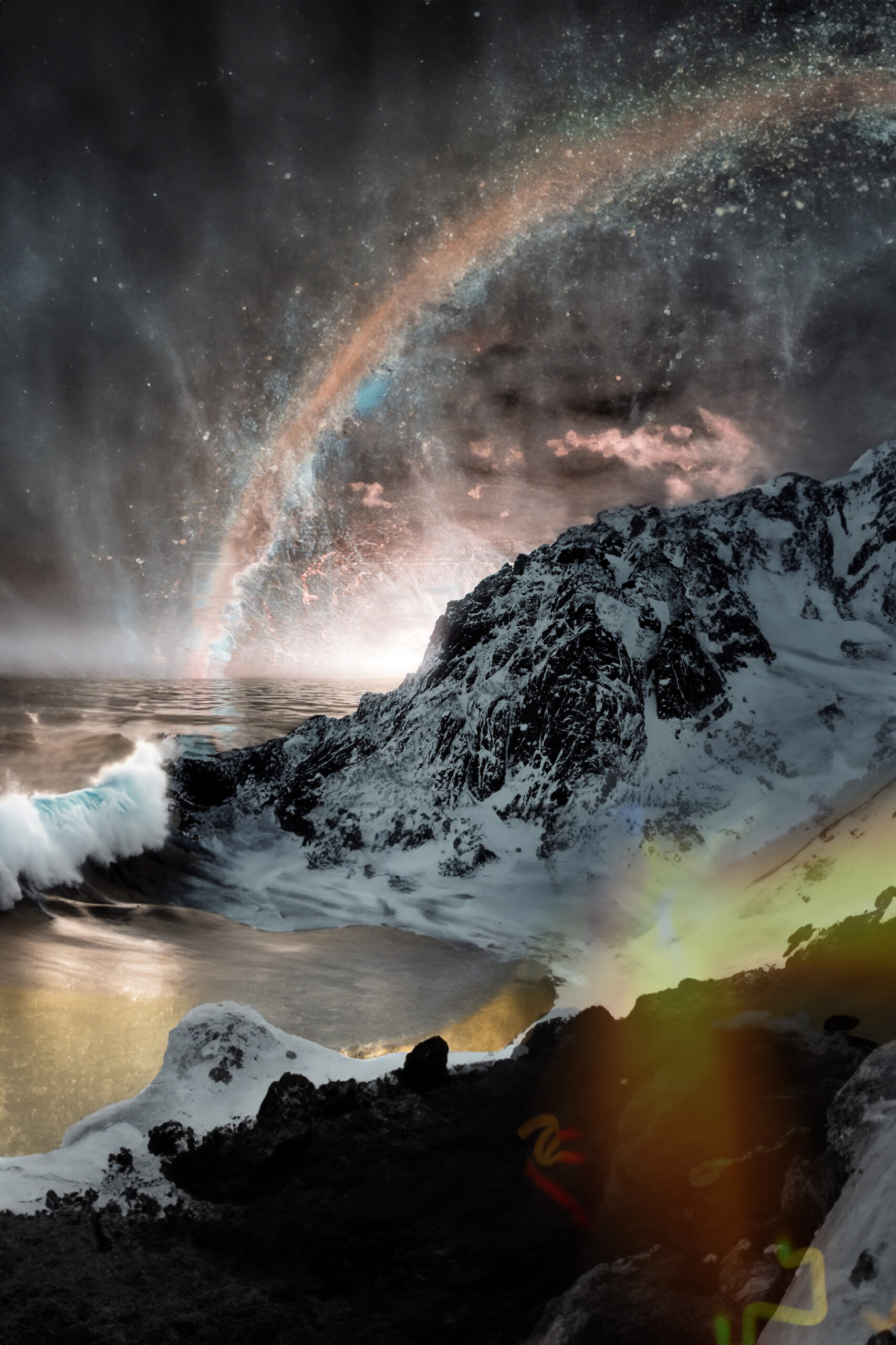
Final Thoughts
The irony between the biblical account of God’s creation and AI’s ability to generate content from prompts lay somewhere in the parallelism of the act of “speaking” to create. In the biblical narrative, especially in the Book of Genesis, God speaks the universe into existence. Phrases like “And God said, ‘Let there be light,’ and there was light” underscore the immense power of God’s word, transforming intention into reality through mere utterance.
In contrast, with modern AI technology, users can input prompts (essentially “speaking” or instructing the AI) to generate content, art, music, or other forms of creation. While AI’s capabilities are undeniably limited compared to the omnipotence ascribed to God, there’s an irony in the semblance. Both narratives, one ancient and spiritual, the other modern and technological, emphasize the profound impact of spoken intention leading to creation.
However, there are significant distinctions. While the biblical account portrays a divine and purposeful act of creation, AI’s “creation” is a result of algorithms, data processing, and human programming. The former is rooted in theological beliefs about purpose and divine intention, while the latter is a testament to human ingenuity and technological advancement. Nevertheless, the juxtaposition offers a thought-provoking reflection on how humans understand creation in various contexts.
By, Michael Wright
Additional Insights
|
|
|
|
|
|
October 2023
